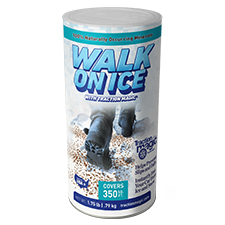How Snowblowers Can Damage Your Concrete Driveway
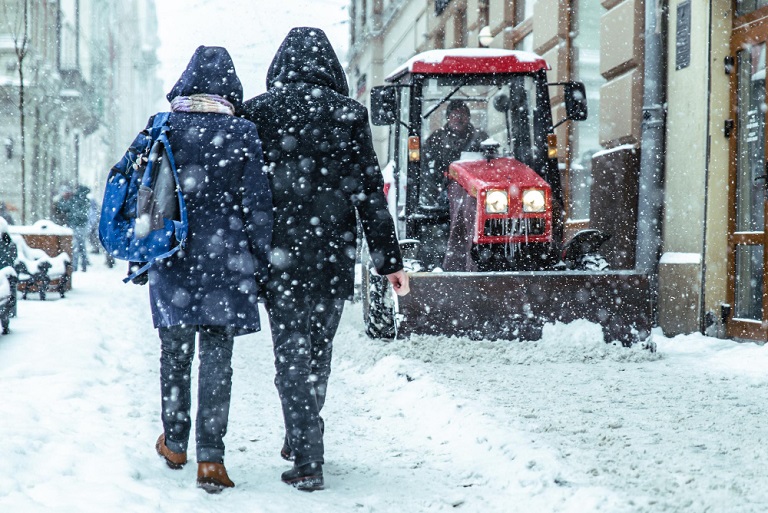
A snow-covered driveway can be a hassle to navigate, especially during harsh winters. A snow blower can be an efficient tool to clear the snow, making your driveway accessible and safe. In this article, we will discuss the proper use of a snow blower for driveway, address concerns about potential concrete damage, and introduce Safe Thaw as a safe winter maintenance solution.
If you live in an area that gets a lot of snow, it can be tempting to use your snowblower to clear the driveway. But if you’re not careful, this can lead to some serious damage to your concrete driveway. In this article, we’ll discuss the most common forms of damage caused by snow blowers to concrete driveways!
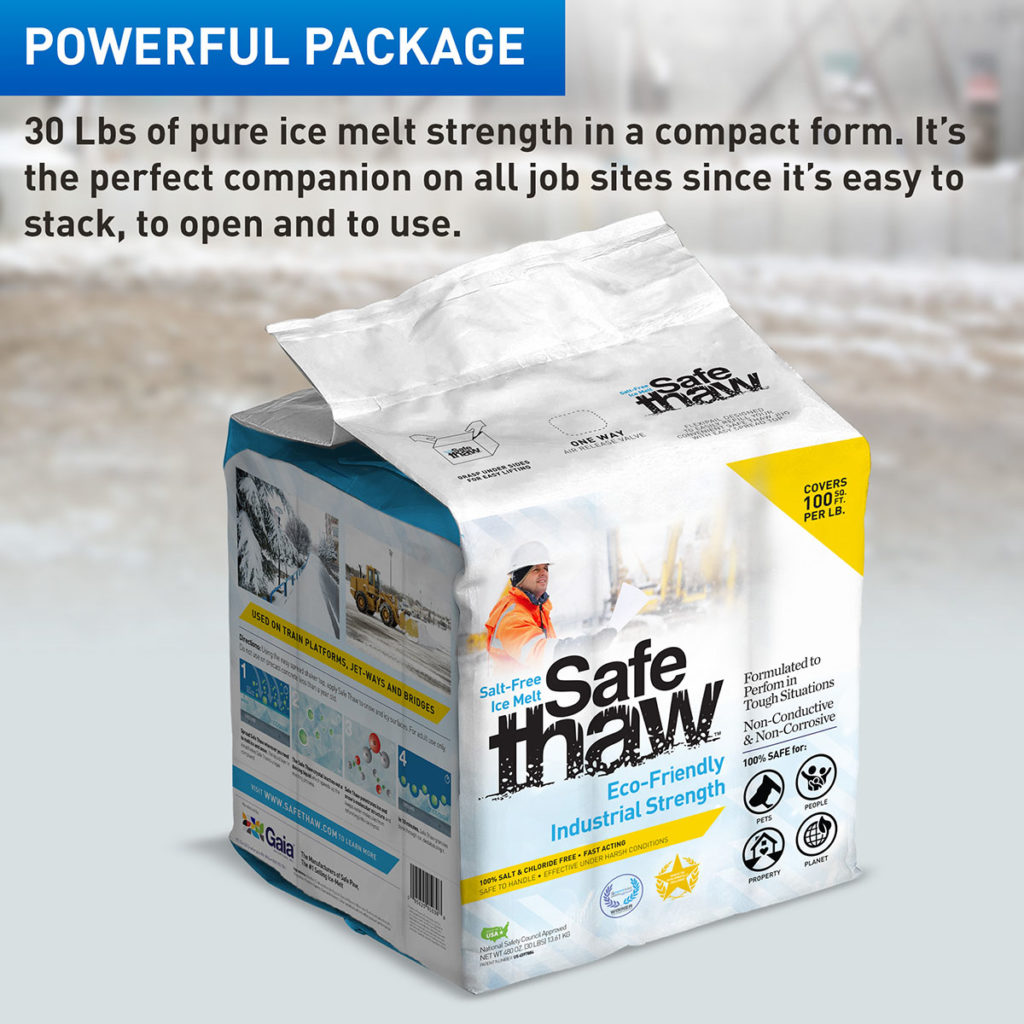
Blizzard Conditions? Stay Safe with Safe Thaw
Safe Thaw was created as the ice management solution for tough winter environments. Ideal in commercial and industrial properties, shops, government agencies, bridges, and construction.
How to Use a Snow Blower on Driveway:
Follow these steps to effectively use a snow blower on your driveway:
- Read the Manual: Familiarize yourself with the manufacturer’s instructions and safety precautions in the user manual.
- Clear Obstacles: Remove any debris, such as rocks or branches, from your driveway before using the snow blower.
- Dress Properly: Wear warm clothing, gloves, and safety goggles to protect yourself from cold temperatures and flying debris.
- Choose the Right Setting: Adjust your best snow blower for concrete driveway’s height and speed settings based on the depth and type of snow.
- Clear in Rows: Work in parallel rows, overlapping slightly to ensure thorough snow removal.
- Watch for Direction: Aim the snow blower’s discharge chute away from people, cars, and windows to avoid accidents.
How to Repair Damaged Concrete Driveway?
If your concrete driveway has suffered damage due to snow, follow these steps for repair:
- Assess the Damage: Identify cracks, chips, or pits in the concrete surface.
- Clean the Area: Remove debris and clean the damaged area with water and a mild detergent.
- Fill Cracks: Use a concrete repair caulk or filler to seal cracks and chips.
- Smooth the Surface: After filling, smooth the surface with a trowel and allow it to dry.
- Seal the Concrete: Apply a concrete sealer to protect the repaired area and prevent future damage.
Winter Storms Are Here!
Stay Safe with Our 100% Salt And Chloride-Free, Pet Safe Ice Melt.
Common Forms of Damage Caused by Snow Blowers to Concrete Driveways!
Scarring: Scarring is a common problem caused by the snow blower’s impeller and can be repaired. Scarring is a shallow, narrow groove that can be taken care of by grinding and then repolishing the concrete. It’s not as bad as cracking or heaving, but scarring is still something you want to take care of as soon as possible.
Cracking: Concrete is a composite material made of sand, gravel, and cement. It’s strong but it can succumb to cracking or spalling if subjected to extreme stress. One of the most common ways for concrete cracks to form is when there are vibrations in the area where you’re standing (or sitting) as you walk or run around on your driveway during snowy days. Snowblowers create vibrations that can cause cracks in your driveway over time—and once they start forming, there’s no repairing them without replacing all of the affected concrete sections of your driveway.
Heaving: The surface of your concrete driveway is likely already damaged by the stress of weather, traffic, and other factors. However, it can be further deteriorated by a snowblower. It occurs when the weight of the snowblower pushes down on the surface and creates heaving in the concrete. Heaving is when the concrete rises and becomes uneven, creating bumps and dips which are incredibly difficult to repair. In such conditions, you must keep your snowblower off your driveway so as not to cause further damage or distress!
Rock Salt Damage To A Concrete Driveway: Not only snow blowers but traditional rock salts can cause crumbles and cracks in your concrete driveway. To prevent this damage and keep your driveway looking great, ensure that you’re using the right ice melt. Then how to melt ice on concrete without salt?
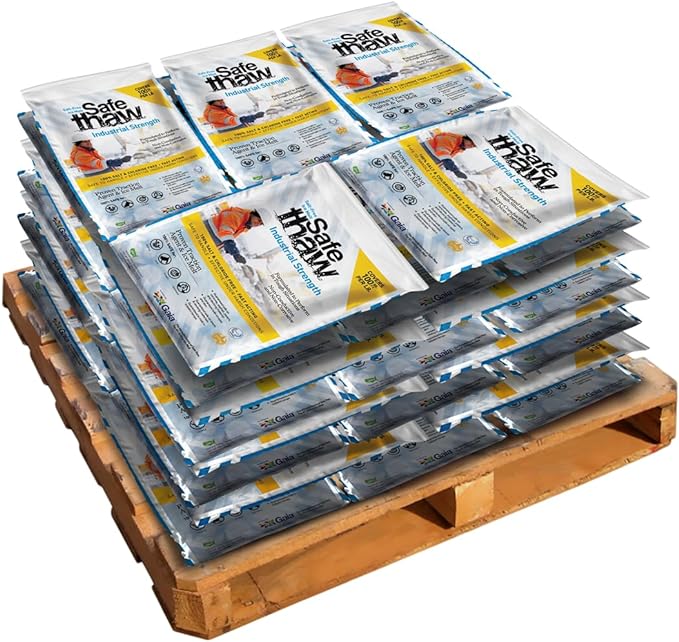
40 Bags
Safe Paw Thaw Industrial Strength Salt-Free Pet Safe Snow Ice Melter and Traction Agent for Concrete, Asphalt, Decks, Lawns, and More, 43 Pound Bag- 40 Bags
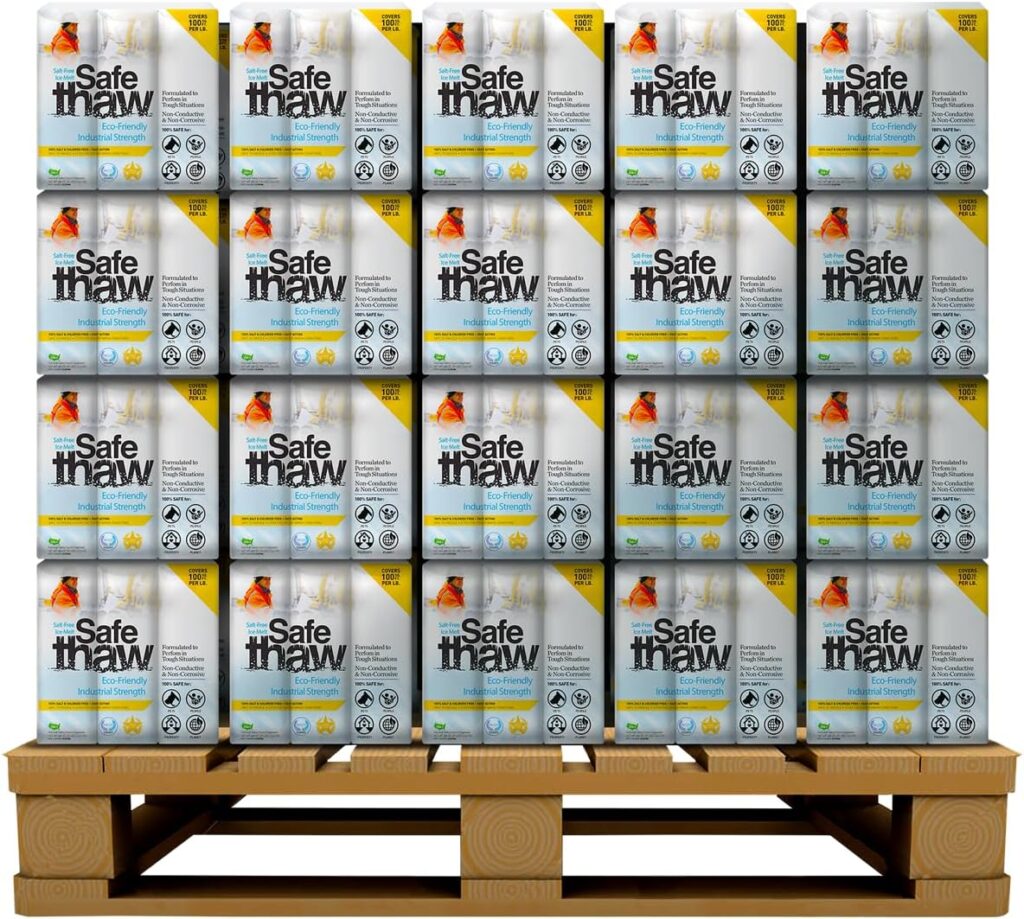
100 Boxes
Safe Thaw Industrial Strength 100% Salt/Chloride-Free, Pet/Paw-Safe Snow & Ice Melter and Traction Agent. Use on Concrete, Asphalt, Roofs & On Any Surface, 30 Pound FlexiPail- 100 Boxes
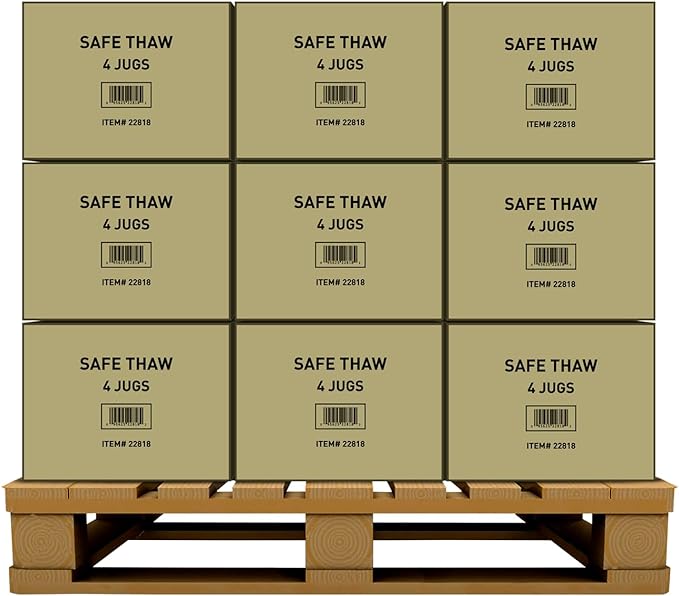
105 Jugs
Safe Thaw Concrete Safe 100% Salt-Free, Pet Safe Snow and ice Melter, Industrial Strength, Chloride-Free, and Traction Agent. Use on Asphalt, Roofs & On Any Surface, 10 Pound Jug- 105 Jugs
Post-Winter Inspection and Repair of Concrete Driveways
Once winter is over, inspecting your driveway for any potential damage caused by snow removal equipment is essential for maintaining its longevity.
Identify Surface Damage
Check for signs of scratches, chips, or cracks. Minor surface damage, such as scaling, can often be repaired with concrete resurfacing products. Understanding the difference between concrete spalling and scaling helps determine the appropriate repair method.
Repair Minor Issues Promptly
Small cracks or chips can escalate into larger problems if not addressed. Use a high-quality patching compound or resurfacer to restore the integrity of your driveway. For extensive damage, consider using concrete resurfacing products designed for heavy-duty repairs.
Reapply Sealants
Applying a sealant after winter protects your driveway from future damage caused by moisture and deicing chemicals. Reapplying sealants every two to three years ensures continuous protection.
100% Salt & Chloride-Free Ice Melt for Winter Storm Protection.
Preventing Future Damage with the Right Practices
By adopting preventative measures and proper techniques, you can minimize the risk of snowblower-induced damage to your driveway:
- Use Eco-Friendly Deicers: Products like Safe Thaw are ideal for protecting concrete surfaces.
- Maintain Equipment: Regularly inspect and replace worn-out parts of your snowblower.
- Avoid Excessive Pressure: Adjust the snowblower’s height to prevent direct contact with the concrete surface.
Conclusion
Snowblowers are an invaluable tool for winter maintenance, but using them incorrectly can cause significant damage to your concrete driveway. By selecting the right equipment, practicing regular maintenance, and considering alternative snow removal methods, you can protect your driveway from harm.
Incorporating ice melt for composite decking and eco-friendly deicing products further ensures that your driveway remains in excellent condition throughout the season. Post-winter inspections and timely repairs with concrete resurfacing products will keep your driveway looking and performing its best for years to come.
FAQs
Try Also Our Other Winter Safety Products:
Traction Magic
Stay safe on slippery surfaces with a product that’s 100% natural and safe for pets, people, and your property. Whether it’s sidewalks, steps, or even your car’s traction, Traction Magic is the go-to choice.
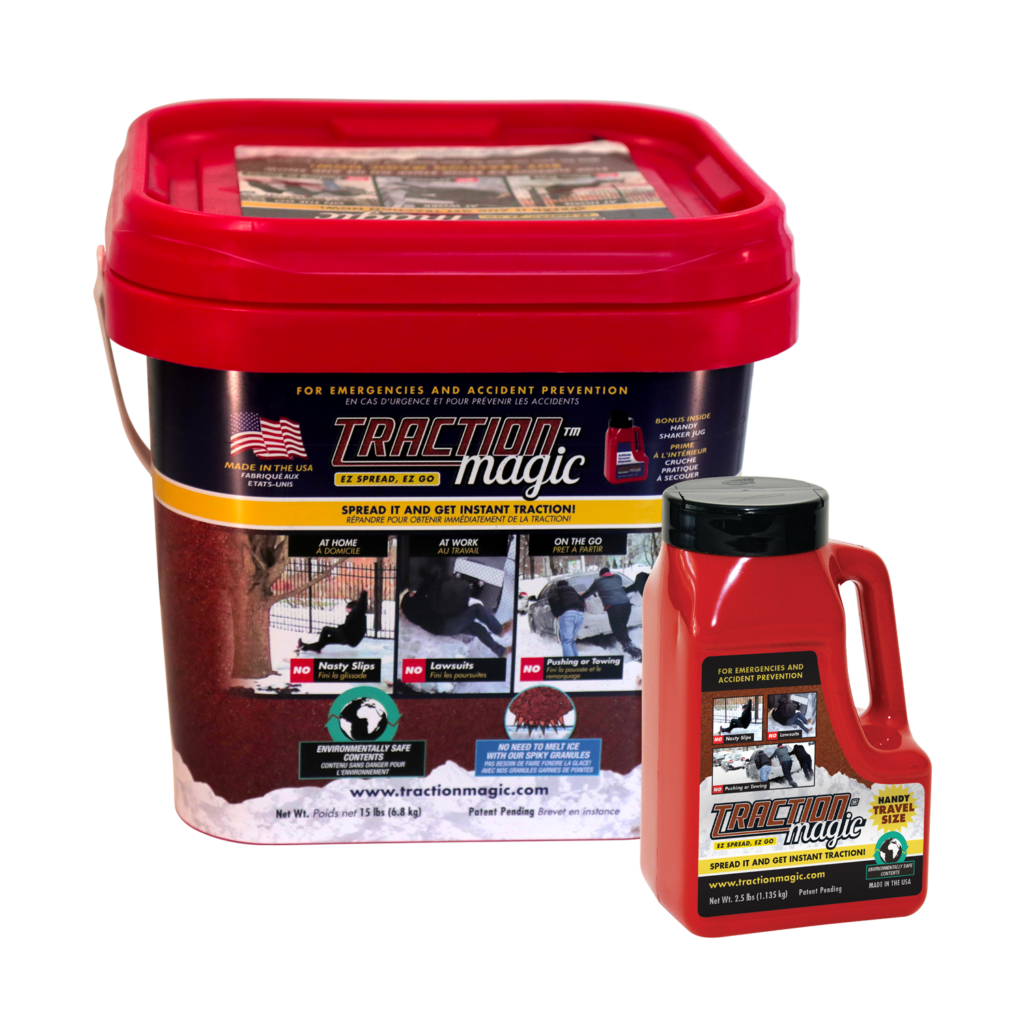
Walk On Ice
The handy disposable canister can be taken everywhere, with the same 100% naturally occurring minerals that provide instant traction on ice or snow. Use it on sidewalks, steps, or as an instant traction agent for your car.
